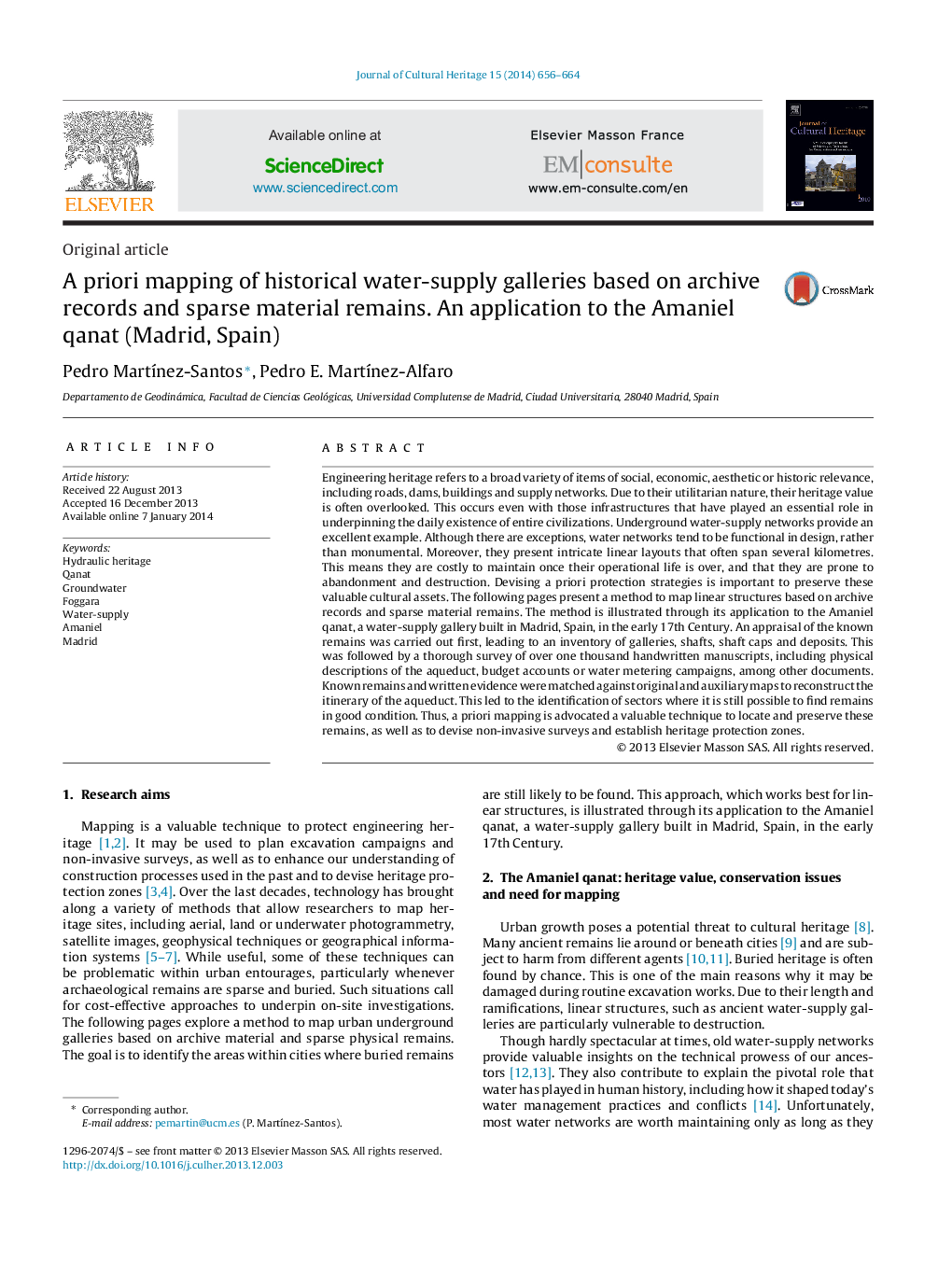| کد مقاله | کد نشریه | سال انتشار | مقاله انگلیسی | نسخه تمام متن |
|---|---|---|---|---|
| 1038016 | 944196 | 2014 | 9 صفحه PDF | دانلود رایگان |

Engineering heritage refers to a broad variety of items of social, economic, aesthetic or historic relevance, including roads, dams, buildings and supply networks. Due to their utilitarian nature, their heritage value is often overlooked. This occurs even with those infrastructures that have played an essential role in underpinning the daily existence of entire civilizations. Underground water-supply networks provide an excellent example. Although there are exceptions, water networks tend to be functional in design, rather than monumental. Moreover, they present intricate linear layouts that often span several kilometres. This means they are costly to maintain once their operational life is over, and that they are prone to abandonment and destruction. Devising a priori protection strategies is important to preserve these valuable cultural assets. The following pages present a method to map linear structures based on archive records and sparse material remains. The method is illustrated through its application to the Amaniel qanat, a water-supply gallery built in Madrid, Spain, in the early 17th Century. An appraisal of the known remains was carried out first, leading to an inventory of galleries, shafts, shaft caps and deposits. This was followed by a thorough survey of over one thousand handwritten manuscripts, including physical descriptions of the aqueduct, budget accounts or water metering campaigns, among other documents. Known remains and written evidence were matched against original and auxiliary maps to reconstruct the itinerary of the aqueduct. This led to the identification of sectors where it is still possible to find remains in good condition. Thus, a priori mapping is advocated a valuable technique to locate and preserve these remains, as well as to devise non-invasive surveys and establish heritage protection zones.
Journal: Journal of Cultural Heritage - Volume 15, Issue 6, November–December 2014, Pages 656–664